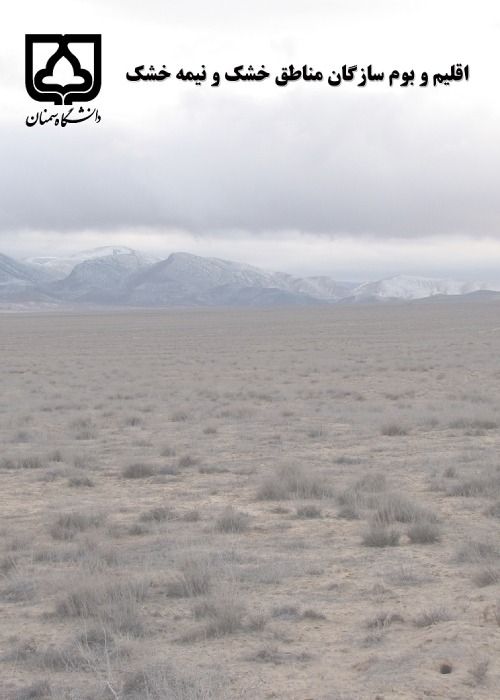Land Degradation Assessment In Pardisan Watershed By Risk Assessment of Land Degradation Method (RALDE)
Land degradation, as one of the serious and common environmental problems in the world, has affected two billion hectares (22.5%) of agricultural lands, rangelands and forests in the world (Dregne et al., 1991; Oldeman et al., 1991; Reynolds and Stafford,2002). Land degradation indicators should be determined, selected and evaluated for the purpose of land management and used by researchers. Considering that in any region at risk of desertification, according to the specific environmental and management conditions governing it, it is necessary to identify the factors of desertification and the intensity of the effect of each factor in order to choose the appropriate measures to control and prevent degradation. In this research, the indicators of land degradation were determined using the RALDE model for the Pardisan watershed, which has sensitive and fragile environmental conditions against desertification factors and the risk of land degradation was determined.
Pardisan watershed with an area of 222.87 km2 is located in the northwest of Qom province. Its climate is arid and hyper-cold. Based on the RALDE model, eight main parameters of soil and land, climate, vegetation, underground water, population, grazing pressure, development and socio-economic were examined to prepare the land degradation potential map. After collecting data, existing maps and information on hydrology, soil, geology, vegetation, population, meteorology, etc. and their interpretation, field studies were conducted. Then scoring indicators and criteria of degradation and its evaluation was done based on natural factors, human factors and trend factor according to the quantitative tables of the RALDE model. Finally, by combining the information of the layers of human factors, environmental factors, the process of land degradation and the current state, a map of land degradation capability was prepared.
The results showed that the risk of natural factors is moderate in more than half of the area, and severe and very severe in 31% of the area. Also, in 38% of the area, the risk of human factors is medium, which especially this area should be considered for control measures and prevention of further degradation. Investigating the process of degradation using changes in the NDVI index in the period from 2002 to 2016 and field studies investigating the state of vegetation showed that in 55% of the area, the risk of degradation is moderate and in 12%, the risk is severe and very severe. The current state of land degradation in the region is mostly in the range of low risk with a probability of 80-100% and severe risk with a probability of 0-20%. Finally, in about three-fourths of the area, the risk of degradation is low and in one-fourth of the area, the degradation is moderate. Severe and very severe risk of destruction was observed only at less than one percent of the area.
Natural degradation risk factors have a greater impact on the destruction of the region compared to human factors. Among these, climate and soil are the most important limiting natural factors. Although only about 1% of the area is in severe danger of degradation due to various protection and restoration measures in a large area of the region, the investigation of the degradation process using the evaluation of vegetation changes showed that in 55% of the area, An average of 4% of the vegetation was destroyed during the years 2002 to 2016. These results show that in most of Pardisan watershed, land resources have not been properly managed and exploited, and if the current trend continues, we will see widespread degradation and loss of resources soon.
-
Investigation and comparison of the accuracy of land use maps obtained from eCognition software and Google Earth Engine (case study of Damghan watershed)
Peyman Akbarzadeh, *
Journal of Extension and Development of Watershed Managment, -
Investigating Desertification and its Effects on the Living Conditions of Farmers (Case Study: Agricultural Lands Around the City Of Sorkheh)
Majid Mohammdai Talajimi, *, Peyman Akbarzadeh
Geography and Sustainability of Environment,



